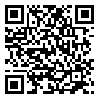Volume 7, Issue 2 (Journal OF Welding Science and Technology 2022)
JWSTI 2022, 7(2): 39-46 |
Back to browse issues page
Download citation:
BibTeX | RIS | EndNote | Medlars | ProCite | Reference Manager | RefWorks
Send citation to:



BibTeX | RIS | EndNote | Medlars | ProCite | Reference Manager | RefWorks
Send citation to:
Rafiaei S M, Eslami G. Welding of titanium base alloys by tungsten-gas pulse arc process (PCGTAW) and investigation of frequency effect on microstructure and mechanical properties. JWSTI 2022; 7 (2) :39-46
URL: http://jwsti.iut.ac.ir/article-1-379-en.html
URL: http://jwsti.iut.ac.ir/article-1-379-en.html
1- , s.rafiaei@iut.ac.ir
Abstract: (5195 Views)
In this research, Ti-6Al-4V alloy sheet with a thickness of one millimeter with butt joint design was welded by tungsten-gas arc welding process using pulse current (PCGTAW) and using AMS 4954G filler metal. In this study, the effect of pulse system frequency on microstructure and mechanical properties was investigated by optical microscopy, Vickers hardness and tensile strength tests. In the non-frequency welding sample, due to the lack of pulse current and lower cooling rate of the molten pool, the formation of large amounts of soft phases of the Weidmann-Statten layer in the weld metal region is possible. Finally, in this method, the lowest average hardness of 341 Vickers was obtained. The experimental results showed that using pulsed current and increasing the pulse frequency up to 450 Hz increased the cooling rate of the molten pool, followed by increasing the amount of martensitic phase α 'in the form of a basket in the weld metal region and finally increasing the average microhardness in this region. In other words, using the maximum frequency led to a significant increase in hardness up to 367 Vickers in the weld zone. Finally, using the tensile strength test, it was shown that in all the samples, failure occurred from the base metal area, which was a very good phenomenon due to the proper welding quality of the samples.
Send email to the article author
| Rights and permissions | |
 |
This work is licensed under a Creative Commons Attribution-NonCommercial 4.0 International License. |






